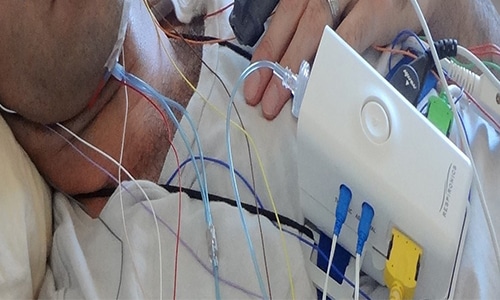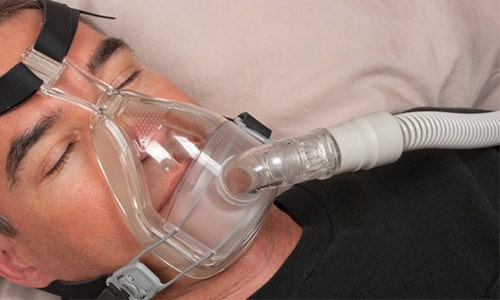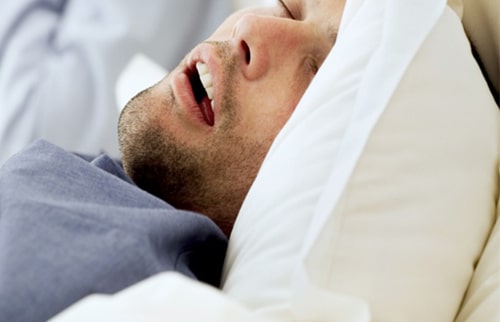Sleep apnea is a disorder that makes it difficult for one to breathe well while sleeping. Usually, one pauses breathing a few times as they sleep, or their breathing becomes alarmingly shallow.
The pauses last for a few seconds or even a minute; then one resumes breathing. Sometimes, one might snore heavily or choke, which causes the disruption from sleep.
There are two types of sleep apnea: obstructive sleep apnea and central sleep apnea.
As the name implies, obstructive sleep apnea occurs when the airway is clogged or blocked by a tissue or such. Central sleep apnea, on the other hand, occurs when the brain fails to send correct instructions to breathing muscles.
Sleep apnea can vary in degrees of intensity. If you suspect that you could be suffering from sleep apnea, it is imperative that you bring up the issue with your primary healthcare provider, or seek the help of a trained sleep physician.
How is Sleep Apnea Diagnosed?
Given the unique nature of this sleeping disorder, it is quite evident that regular tests cannot help in diagnosing it. Testing for the disorder is physical for the most part. Your sleep physician will first carry out a physical examination to find out the possible causes of your disrupted sleep.
Do you have any large issues that could be blocking your airway? This is mostly the case for children who suffer from sleep apnea.
Most of the time, they have enlarged tonsils that cause the problem. The physician may also use specialized equipment to diagnose the problem better.

If your apnea is too severe, you might have to undergo an in-lab overnight sleep study. This means that you spend a night in a health facility where your sleep pattern will be monitored using special equipment known as a Polysomnogram.
The equipment is hooked onto various parts of your body and collects data as you sleep. The data includes heartbeats, brainwaves, movement, and breathing.
The data is then analyzed to reach a conclusion about the cause and severity of the disorder. This diagnosis is relatively costly, but most insurances cover it.
Alternatively, you can opt to have a home apnea test. This means that you take the equipment at home with you and hook it on by yourself.
The equipment, in this case, is fairly uncomplicated, and the staff at the health facility will show you how to attach it. Much like the Polysomnogram, this equipment also collects data about your sleep patterns.
The specialist may also require that you keep a sleep diary, where you record about going to bed and when you wake up every day for about two weeks.
You may also need to record the number of times your sleep is disrupted, and how refreshed you feel in the morning. All this will be necessary for the diagnosis.
Treatment
Sleep apnea is a condition that should be treated soonest possible; else you may have to deal with the nasty repercussions of leaving it untreated. Various treatment options are available to you.
One of the most popular and common treatments for sleep apnea is known as Continuous Positive Airway Pressure (CPAP).
For this treatment, you will need to sleep in a mask attached to a machine by a hose. The machine continuously blows a stream of air to your airway all night, thus ensuring that it remains open when you are asleep.
Alternatively, you can opt to undergo Oral Appliance Therapy. With this treatment, a device is fitted in your mouth to hold your tongue and jaw in place as you sleep. The device resembles retainers or sports mouth guards. It is ideal for those who suffer from mild or moderate sleep apnea and can’t stand the CPAP treatment.

You could also choose to undergo positional therapy if your apnea results from a given sleeping position. There are those who get breathing problems when they sleep on their backs but experience no problems when sleeping on their side. Special equipment is used to restrain their movement during sleep and to prevent them from lying on their backs.
As a last resort, you can also opt to undergo surgery to clear the airway, especially if large tissues block it. Being overweight is also a significant cause of sleep apnea, so you can also undergo surgery to help you lose the extra weight.
Alternatively, you can choose to exercise a bid to lose the weight. Sometimes, lifestyle changes may be necessary. You may have to quit smoking or drinking alcohol.
You could also undergo cognitive behavioral therapy to help you counter your sleeping problems. Taking decongestants before sleeping may also be necessary.
Sleep apnea is a sleep disorder that needs to be treated as soon as you start experiencing the symptoms. Do not take it for granted: it might cost you a lot. Be sure to contact a healthcare provider as soon as possible to save yourself and your bed partner a lot of problems.
